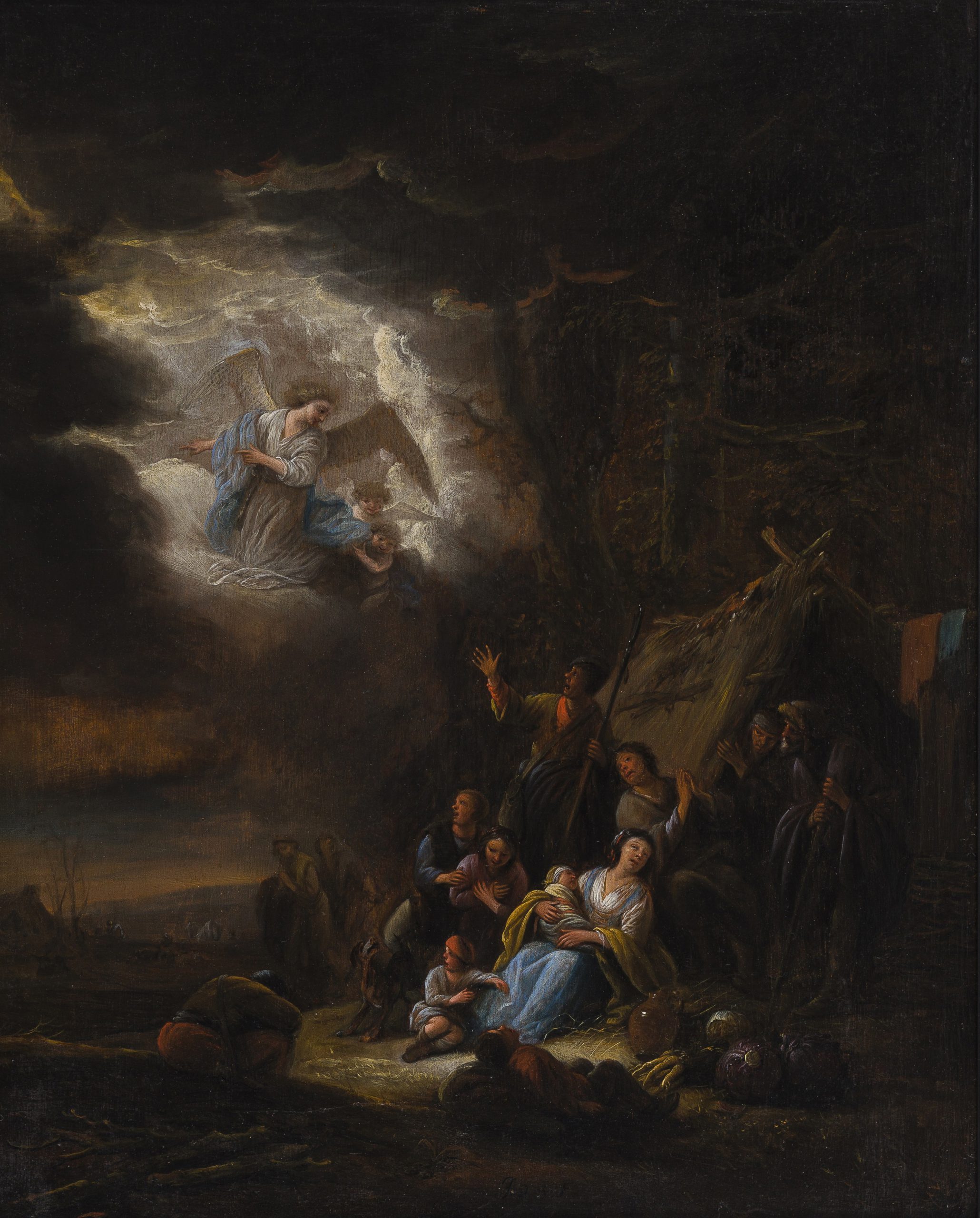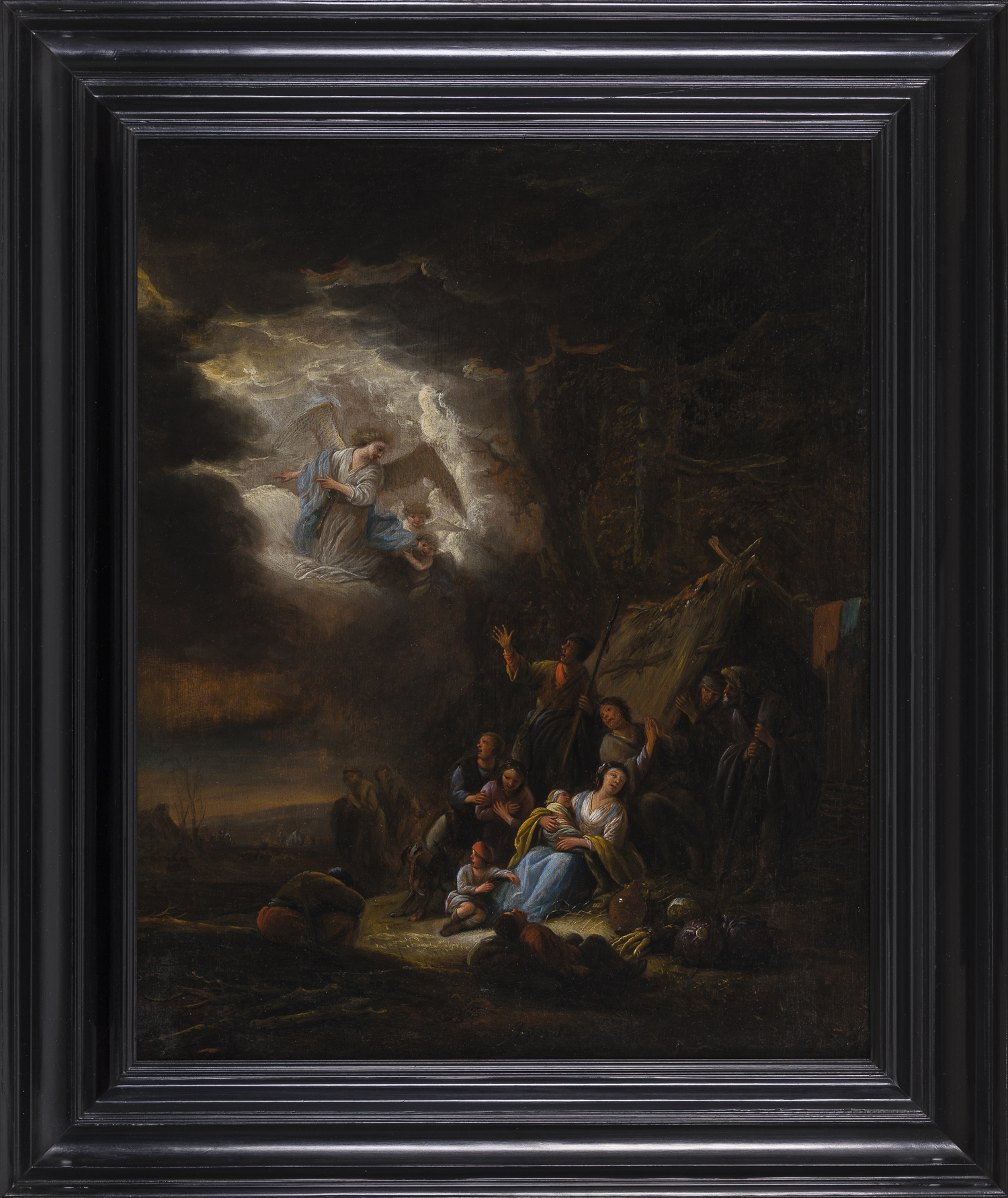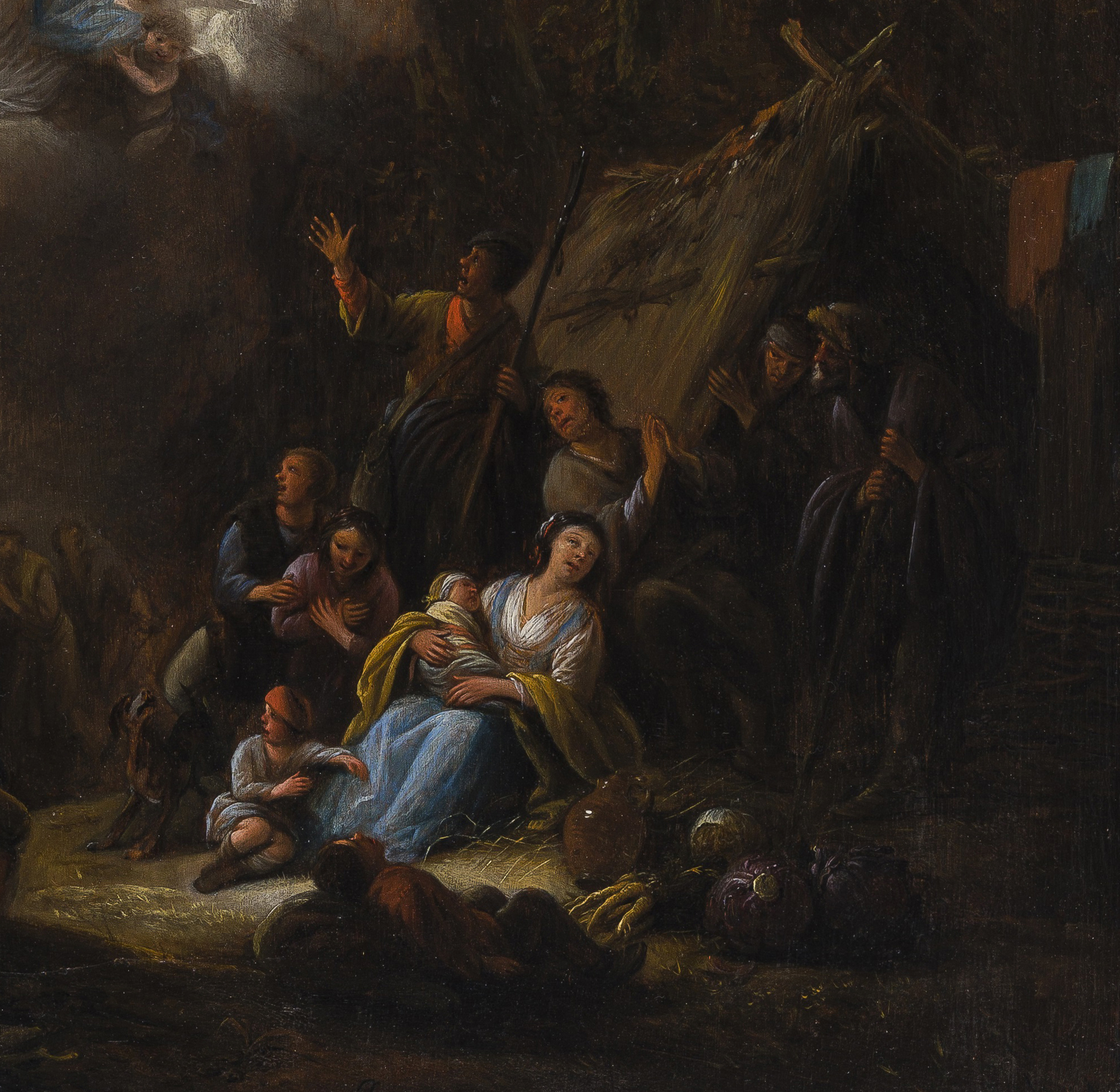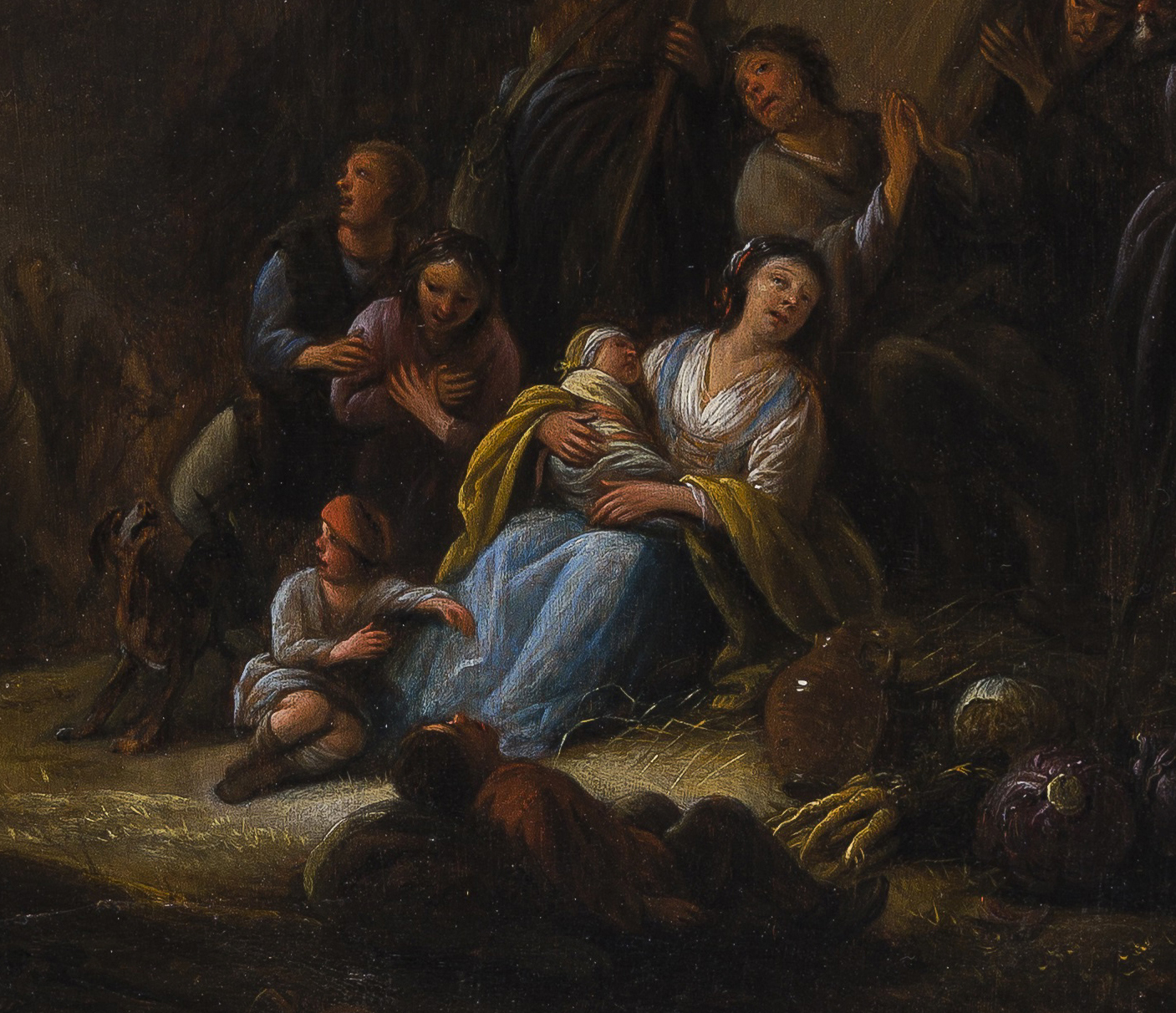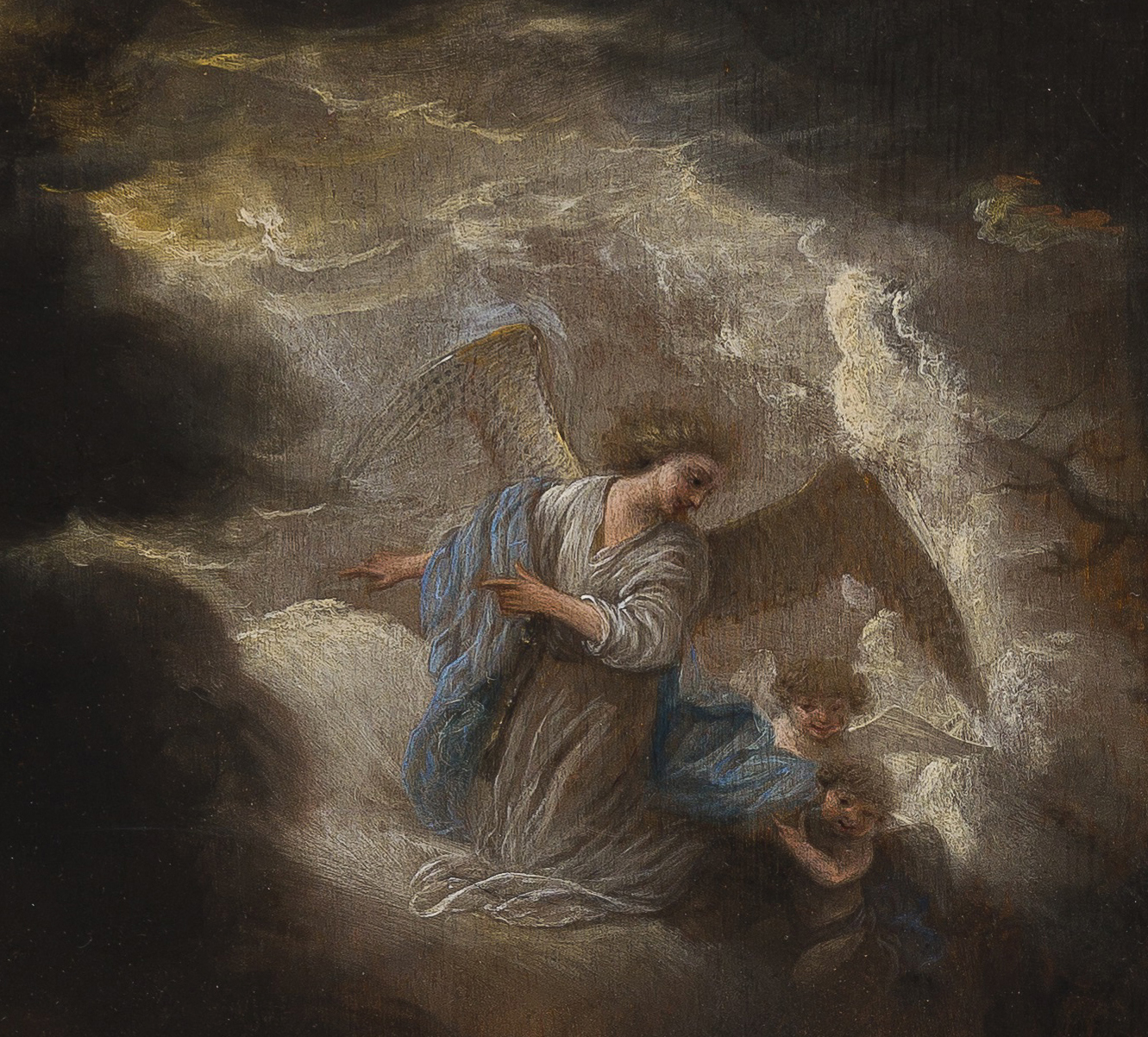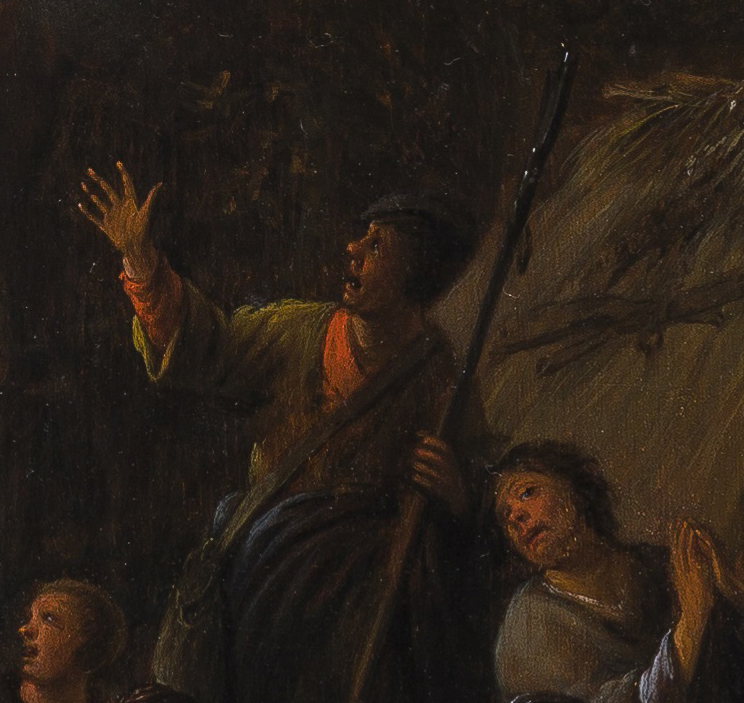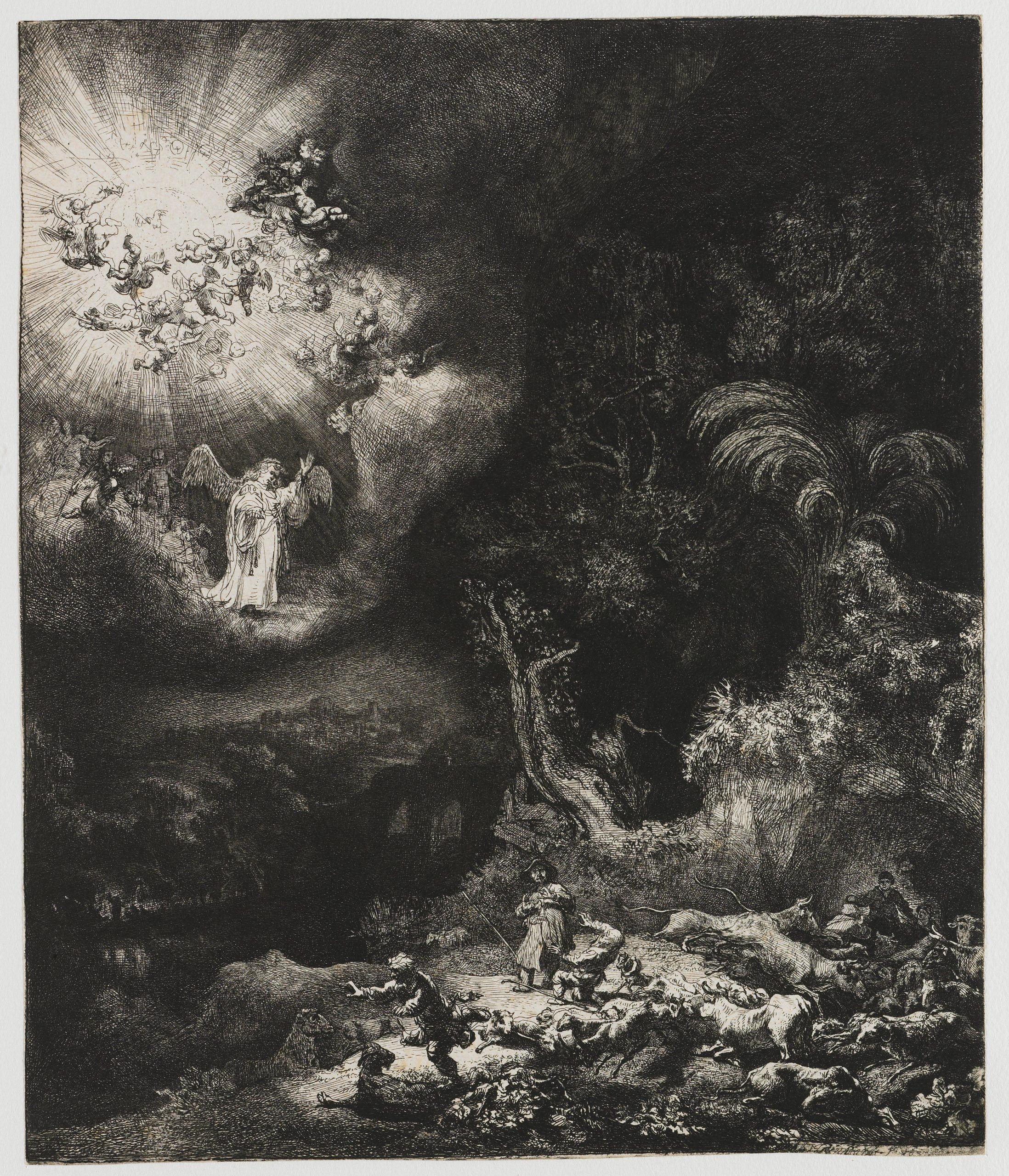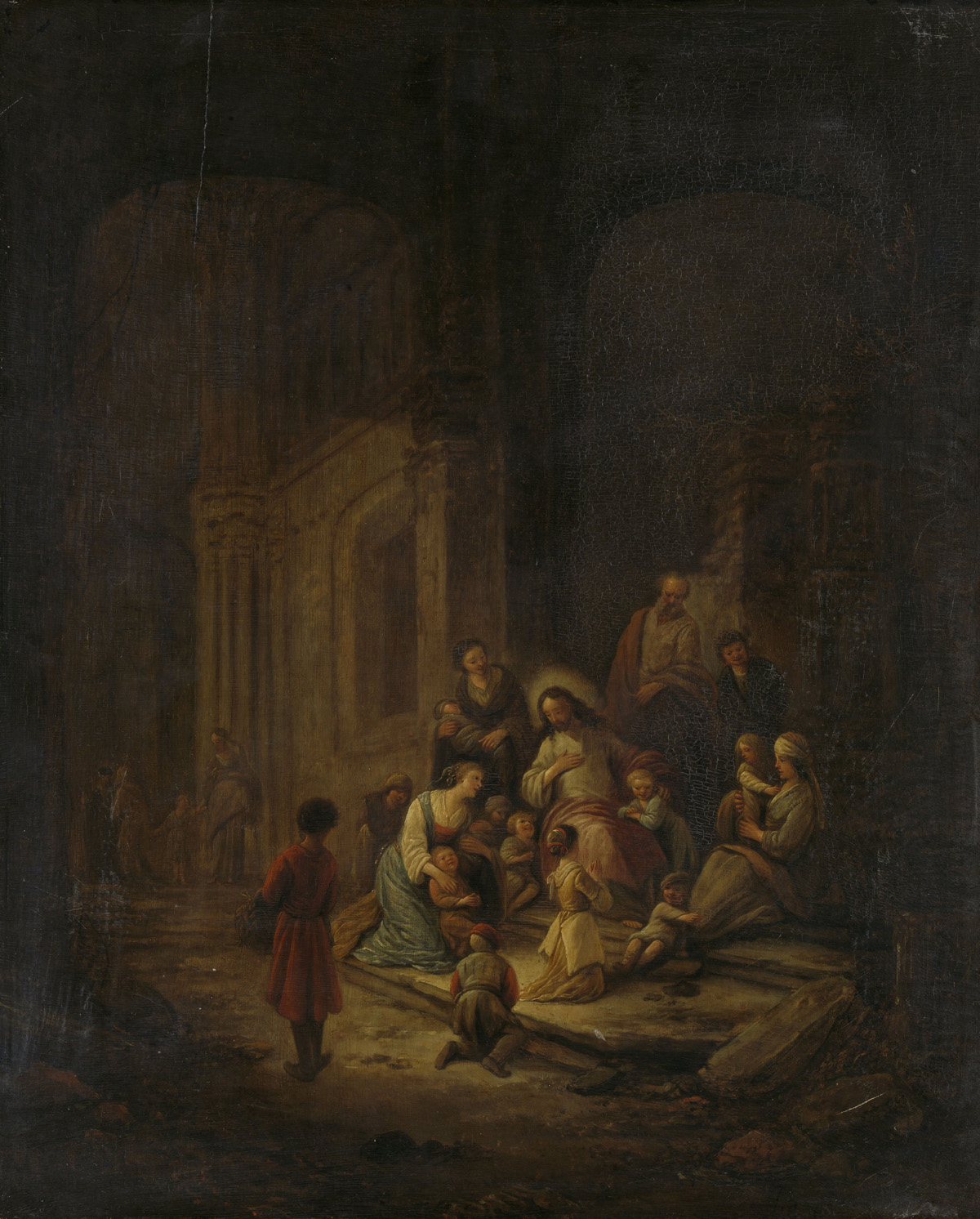JACOB DE WET I (Haarlem c. 1610 – c. 1675 Haarlem)
Jacob de Wet I (Haarlem c. 1610 – c. 1675 Haarlem)
The Annunciation to the Shepherds
Oil on panel, 53 x 42.5 cm (20.0 x 16.7 inch); presented in an ebonised frame of 17th-century model
Signed ‘JD Wet’ (lower centre)
Remains of red lacquer seals on reverse
Provenance
Private collection, France
***
Jacob de Wet was born around 1610 in Haarlem as the son of the Catholic Bailiff Willem Jansz de Wet and Marritge Jacobsdr.1 His earliest known work dates from 1632, the year in which he joined the Haarlem guild of St Luke. De Wet may have been trained by his grandfather, the painter Jan de Wet, whose oeuvre remains nearly completely unknown. De Wet’s paintings show a strong a awareness of the paintings of Pieter Lastman and the early Rembrandt, and it cannot be excluded that he studied with the latter.
De Wet led a successful studio in Haarlem and is known to have trained some 37 pupils. He specialised in paintings with biblical subjects and nearly all his surviving works are taken from subjects from the Old and New Testament. Among his pupils were Paulus Potter, Job Berckheyde, Jan Vermeer of Haarlem, and his own son Jacob de Wet II. De Wet was known as a connoisseur of painting, and in 1671 he was chosen as one of fifteen ‘best connoisseurs’ to judge the paintings by Italian masters in the collection of Gerrit Uylenburgh. The only seventeenth-century portrait of De Wet was sold by ourselves to the Noord-Hollands Archief in 2015.
The painting is proudly signed and is likely to date from the period around 1640, when De Wet was at the height of his career. Influences from Rembrandt are particularly strong in this piece in the strong effects of dark and light, chiaroscuro. However, it is also reminiscent of Rembrandt in its subject matter, in particular to Rembrandt’s etching of the same subject of 1634, which De Wet must have known (fig.).2 The present work can be compared to De Wet’s Christ Blessing the Children in the Rijksmuseum in Amsterdam (fig.).3
SOLD
1. For the artist, see: A. Jager, ‘The workshop of Jacob de Wet (1610-1675) and his mass production of history painting’, Oud Holland, 131, 2018, pp. 67-103.
2. Etching, 260 x 220 mm, Bartsch 44; an impression is preserved in the Rijksprentenkabinet, inv. no. RP-P-1962-19.
3. Panel, 55 x 45 cm, inv. no. SK-A-1350; P.J.J. van Thiel, All the paintings in the Rijksmuseum, Amsterdam 1976, p. 603, repr. This painting was formerly in the collection of Dr Abraham Bredius.
